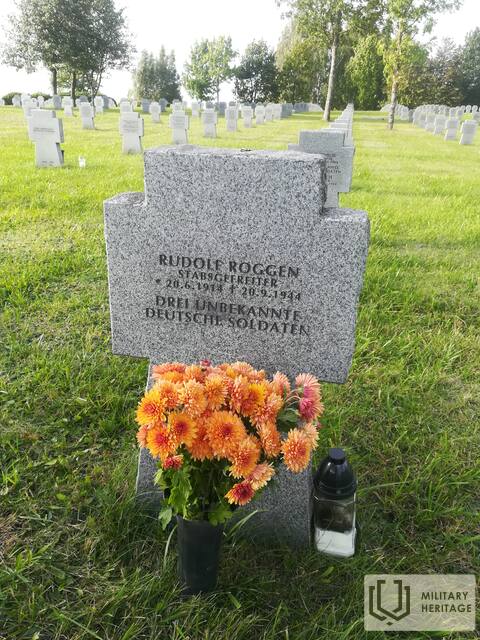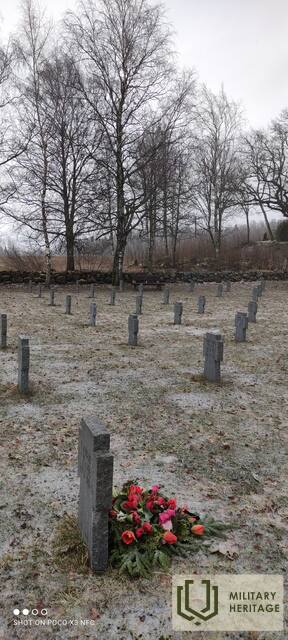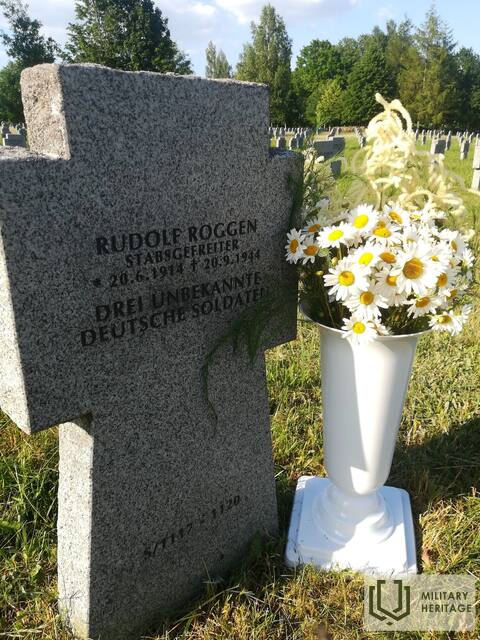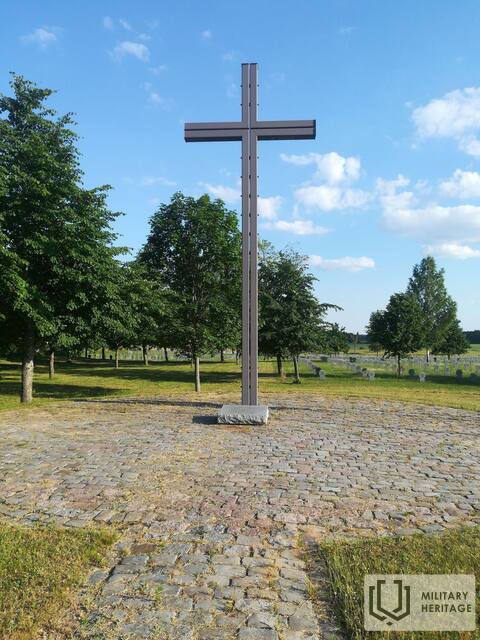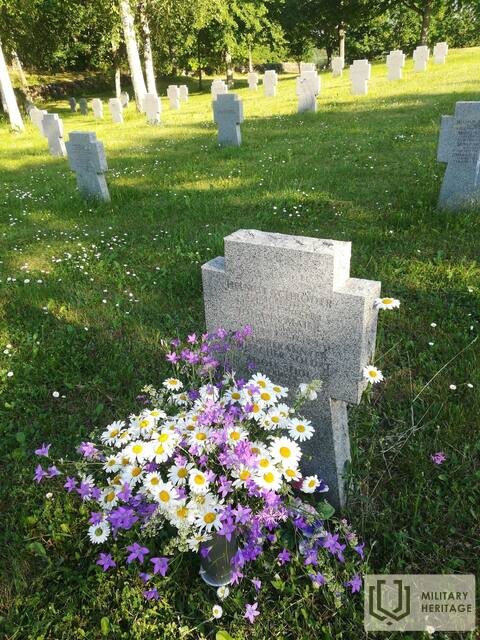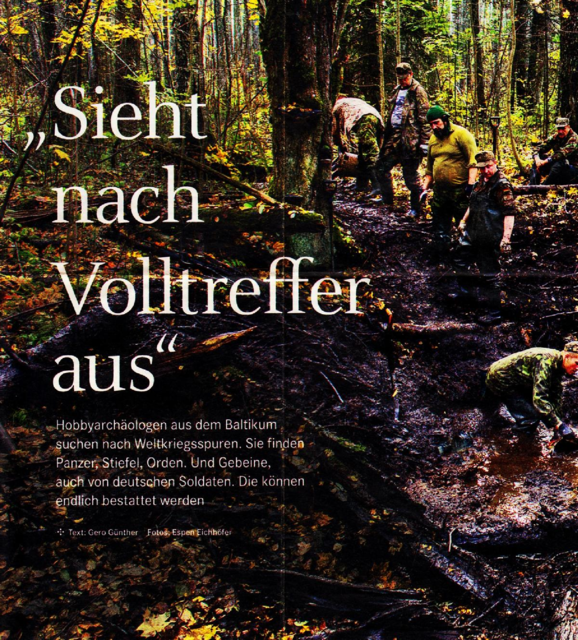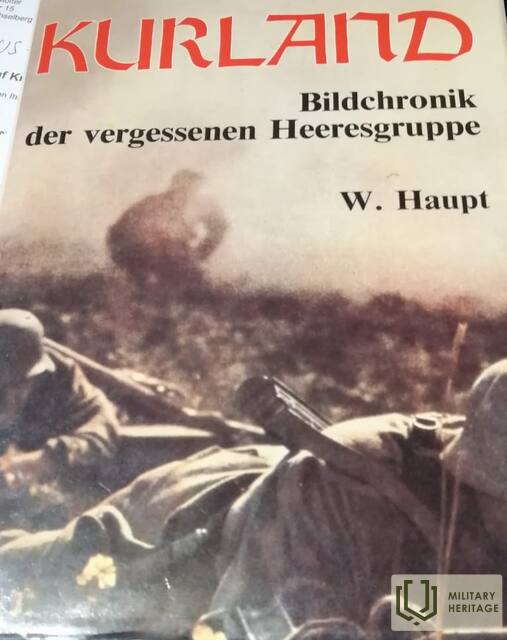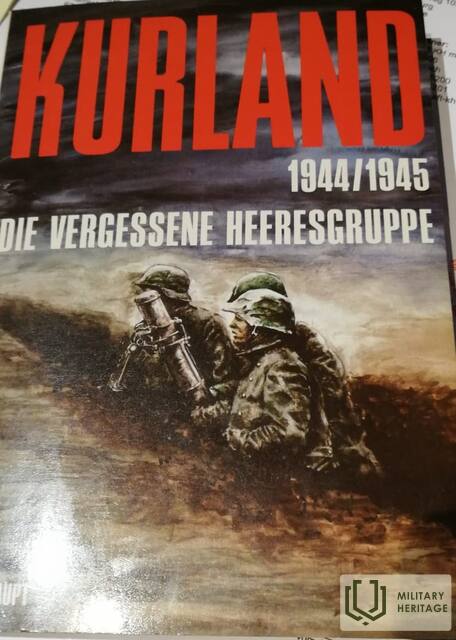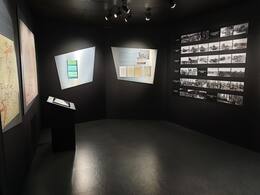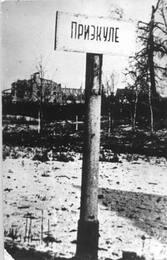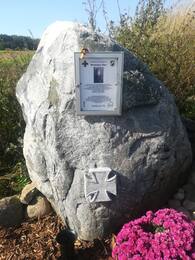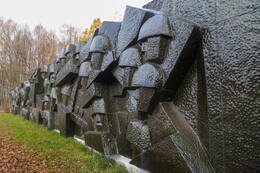"Война не закончена, пока не похоронен последний солдат" (Солдусское немецкое солдатское кладбище)
Курземе возникла как отдельное и самостоятельное поле боя 10 октября 1944 года. Около 500 000 немецких войск считались окруженными. Согласно докладам штаба 1-го Балтийского фронта, для полного освобождения всего Балтийского побережья требовались лишь "небольшие усилия". Однако бои в Курляндии продолжались еще семь месяцев, и Курляндия стала символом окончания Второй мировой войны.
За семь месяцев боев до мая 1945 года немецкие войска в Курляндии потеряли 154 108 солдат убитыми, ранеными и пропавшими без вести. С 1997 года в районе Салдуса проводится обследование военного кладбища и перезахоронение солдат, и в настоящее время здесь можно найти 27 000 имен павших солдат.
Курземе возникло как отдельное и самостоятельное поле боя 10 октября 1944 года. Красная Армия пыталась использовать успех в Белоруссии с конца июля 1944 года, где менее чем за месяц была уничтожена немецкая армейская группа "Центр". В начале августа 1944 года части советского 3-го гвардейского механизированного корпуса захватили Тукумс и вышли к Клапкалнцу на Рижском заливе, прервав сухопутное сообщение между группой армий вермахта "Север" и Германией. Однако первая попытка Красной Армии прервать сообщение не увенчалась успехом, поскольку немецкая контратака привела к восстановлению сухопутного коридора в районе Тукумса уже в конце августа 1944 года.
Следующая попытка окружить немецкую армию началась 14 сентября 1944 года, когда три Прибалтийских фронта с 1 546 000 войск начали наступление в направлении Риги. Эта попытка также не увенчалась успехом, и Красной Армии пришлось изменить свои планы. Третья попытка, известная как "Клайпедское наступление", была не только успешной, но и стала одним из величайших достижений Красной Армии во время Второй мировой войны. 5-я танковая армия, начав наступление 5 октября, вечером 10 октября достигла балтийского побережья в районе Паланги.
По оценкам, в окружении находилось около 500 000 немецких войск. По сообщениям штаба 1-го Балтийского фронта, для полного освобождения всего Балтийского побережья требовались лишь небольшие усилия. Однако бои в Курляндии продолжались еще семь месяцев, и Курляндия стала символом окончания Второй мировой войны.
За семь месяцев боев до мая 1945 года немецкие войска в Курляндии потеряли 154 108 солдат убитыми, ранеными и пропавшими без вести. Точное число погибших и пропавших без вести неизвестно, но оно могло достигать 50 000 человек. После окончания войны кладбища немецких солдат были уничтожены советскими войсками. Эксгумация павших солдат с полей сражений и разрушенных кладбищ началась в начале 1990-х годов.
С 1997 года началось исследование и перезахоронение воинских захоронений вблизи Салдуса, и в настоящее время здесь можно найти 27 000 имен павших солдат. Работа еще продолжается, так как не все захоронения исследованы. Имена перезахороненных солдат показывают, что в немецкую армию, наряду с немцами и австрийцами, были призваны также латыши, эстонцы, литовцы, норвежцы, датчане и представители других национальностей.
Связанная хронология
Связанные темы
Связанные объекты
Кладбище немецких солдат в Салдусе
Салдусское кладбище немецких солдат расположено на трассе Салдус-Эзере. На кладбище площадью 8 гектаров было перезахоронено около 25 000 немецких солдат, а также несколько латвийских легионеров. Перезахоронения происходят с 1997 года.
С 1 мая по 1 октября в мемориальном зале можно увидеть экспозицию, посвященную Курземской битве. В этот период мемориальная комната открыта по будням с 9:00 до 17:00, по субботам и воскресеньям на кладбище также работает экскурсовод. Также доступны реестры солдат, похороненных в Салдусских могилах немецких солдат, и павших солдат по всей Латвии.
Хранилище культурно-исторических и краеведческих материалов «Таможня» в Эзере
Дом «Таможня» находится в Эзере, недалеко от дороги Салдус - Мажейкяй у латвийско-литовской границы. 8 мая 1945 года в этом здании был подписан акт о капитуляции немецкой группы армий «Курляндия» (Kurland), запертой в Курляндском котле. Считается, что в Эзере фактически закончилась Вторая мировая война. В доме таможне размещена экспозиция о событиях конца Второй мировой войны и экспозиции истории Эзереской волости с древних времён и до наших дней.
Утром 7 мая 1945 года командующий Ленинградским фронтом маршал Л. Говоров направил руководству группы армий «Курземе» ультиматум с требованием сложить оружие. Стороны подписали акт о капитуляции 8 мая, предусмотрев нем процедуру капитуляции, пункты сбора оружия, объем документов и информации, которые необходимо предоставить, и другие практические мероприятия.
Место памяти Германа Фауля
Он находится на перекрестке сельских дорог, свернув с дороги, ведущей из Пиенавы в Джуксте.
Мемориал Г. Фаулу и девяти немецким и латышским солдатам, которые погибли в бою 27 декабря 1944 года (вероятно, взорвались от прямого попадания пушечного снаряда) и с тех пор считаются пропавшими без вести, так как не найдены их останки, документы или другие доказательства их личности.
Мемориальный ансамбль Воинского братского кладбища в Приекуле
Мемориальный ансамбль Воинского братского кладбища в Приекуле, установленный на обочине дороги Лиепая - Приекуле - Шкода, является крупнейшим захоронением советских воинов Второй мировой войны в Балтии, где захоронено более 23 000 советских солдат. Приекульская операция была одним из самых ожесточенных сражений Курземской крепости с октября 1944 года по 21 февраля 1945 года. Битва за Приекуле в феврале 1945 года продолжалась семь дней и ночей без перерыва и закончилась крупными потерями с обеих сторон. Последний памятник выдающегося латышского скульптора К. Зале (1888–1942), который должен был быть установлен в память о борьбе за свободу в Алое, украшал Воинское братское кладбище в Приекуле до тех пор, пока его не превратили в мемориал. В период с 1974 по 1984 годы братское кладбище в Приекуле площадью 8 га было преобразовано в мемориальный ансамбль павшим во Второй мировой войне.
Его авторы - скульптор П. Залькалне, архитекторы А. Золднерс, Э.Салгус и дендролог А. Ласис. В центре мемориала находится изображение Родины-матери высотой 12 м, а имена павших выгравированы на гранитных плитах. До восстановления независимости Латвии каждый год 9 мая здесь очень широко отмечался День Победы.




